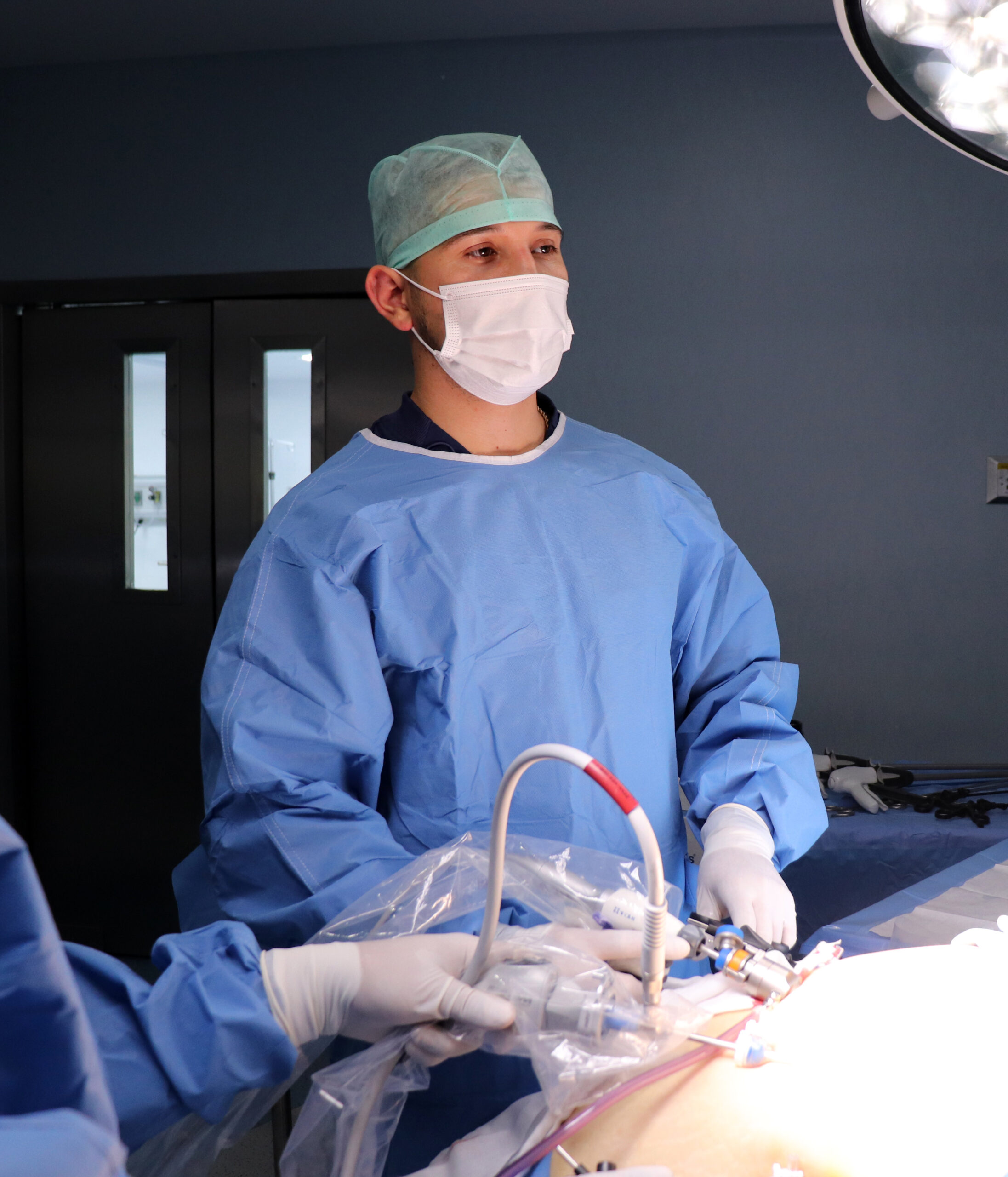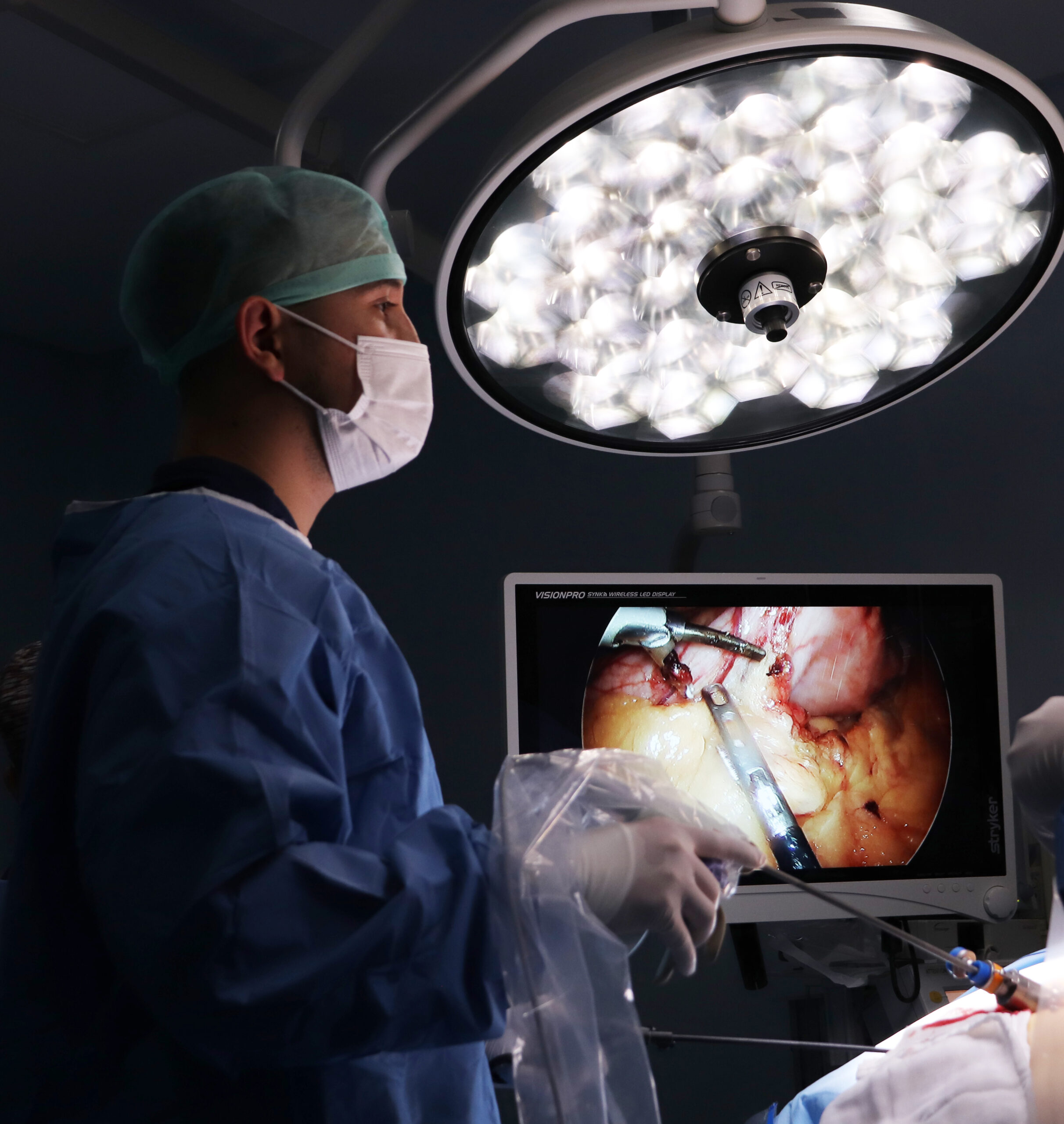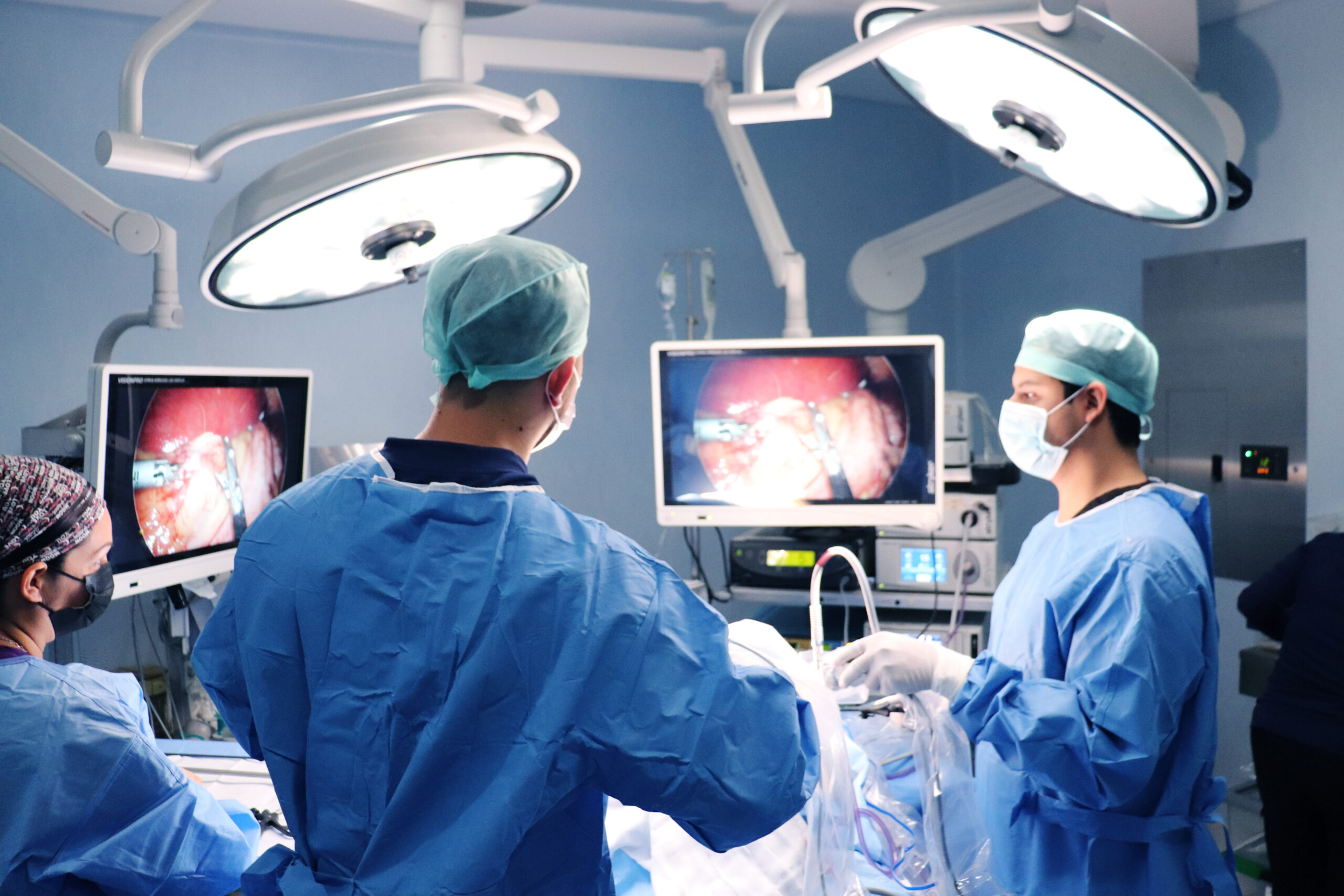Weight loss surgeryGastric Sleeve
Gastric sleeve, also called sleeve gastrectomy, is the bariatric procedure to remove a large part of the stomach, leaving only a narrow sleeve or tiny tube in the stomach, which will prevent having large amounts of food.
As a result, the patient will lose weight because he/she will feel satisfied with less food due to the small size of the stomach.
In addition, the procedure removes the upper part of the stomach that produces ghrelin, the so-called hunger hormone. Without it, the patient will be satisfied with less food.
Another result is a decrease in the production of gastric acids that break down food, which reduces the body’s absorption of food.
The results are permanent and the stomach will not grow back.
For the obese patient, the Gastric Sleeve is the opportunity for a spectacular weight loss, improving their health and self-esteem.
The Gastric Sleeve is one of the procedures that doctors recommend to patients with severe obesity to avoid many health risks. Obesit endangers the health associated with conditions such as high blood pressure (hypertension), heart attack, diabetes, high blood cholesterol or osteoarthritis, among others.
After the surgerv. the patient loses weight month by month. and after one vear. he/she reduces between 60 and 70 percent of his/her weight.
For example, a person who is now 100 kg or 220 pounds, can realistically expect to reduce at least 40 kg / 88 pounds after 12 months.
The least invasive procedure with laparoscopy
we perform laparoscopic surgery, which means inserting a tiny video camera through a small incision, with no open cuts or scars, and reducing the risk of complications.
Among other bariatric surgeries, such as Gastric Bypass or Gastric Balloon, the Gastric Sleeve is less invasive.
Surgeons will perform all operations from outside the body, only viewing the procedure through a monitor.
Gastric bypass is one of the most effective weight loss surgery procedures.
In this procedure, the surgeon reduces the size of the stomach, making a shortcut to the intestines. The smaller stomach makes the patient feel less hungry and reduces the area of food absorption by the body.
In addition, this surgery reduces the production of ghrelin, the so-called hunger hormone, responsible for the sensation of hunger.
As a result of the surgery, the patient will feel satisfied faster, eat less and absorb fewer calories.
The objective is to reduce the amount of food the patient eats and the amount of fat or carbohydrates the body receives, improving the life of people with obesity.
Procedure
Doctors perform the procedure under general anesthesia, which means that the patient will remain asleep during the surgery.
The surgeon will use Laparoscopic Surgery, which means that he will perform the operation using a small television camera and instruments operated from the outside of the body, without large incisions.
The surgeon will use Laparoscopic Surgery, which means that he will perform the operation using a small television camera and instruments operated from the outside of the body, without large incisions.
To insert the laparoscope and instruments, the surgeon will make five or six incisions in the abdominal area.
Each incision measures less than one centimeter and most will remain hidden in the natural folds of the body.
The laparoscope is a tiny camera the size of a pencil that allows the doctor to operate without large incisions.
Weight loss surgeryMini-Gastric Bypass
A mini gastric bypass surgery functions just like a traditional gastric bypass surgery bun that the stomach is divided into upper and lower pouches and the small intestine is rerouted. This allows for both restrictive and malabsorption weight loss.
The primary difference between mini gastric bypass surgery and a full gastric bypass is that the mini version of the surgery is performed in a modified manner that involves less intestinal rerouting and a shorter overall surgery time.
Risks and Benefits of Mini Gastric Bypass Surgery
The main benefit of the mini gastric bypass is that it provides comparable results to traditional gastric bypass in a shorter, less invasive procedure. Generally, this means easier recovery and less chance of complications.
In terms of infection and adverse side effects, the risks are similar to those of traditional gastric bypass surgery. There is also a risk that weight loss may not be as severe as traditional gastric bypass surgery requiring additional treatment.
Determine the right weight loss program for you.
Since both traditional gastric bypass surgery and small gastric bypass surgery work similarly, the candidacy for each surgery really depends on the patient’s needs and goals. In a face-to-face consultation at our clinic, we will be able to determine which surgery is best for you and your current struggle with obesity.






